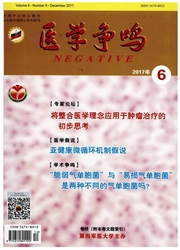

 中文摘要:
中文摘要:
目的:建立兔VX2肾癌模型,观察模型动物在螺旋CT,MRI及肾动脉造影的影像学表现.方法:新西兰大白兔加只,采取VX2瘤块种植法成瘤,分别在不同时段行螺旋CT,MRI及肾动脉造影检查.结果:实验组成瘤率100%.肿瘤在螺旋CT平扫时呈等密度或低密度灶,增强后呈低密度结节,边缘环形强化.MRI平扫时,肿瘤在T1 WI和T2 WI上分别为较均匀低信号和稍高信号灶,3wk后肿瘤因坏死、液化而表现为高低密度混合型结节.肾动脉插管造影,VX2肾癌呈丰富血供表现.结论:兔VX2肾癌模型的最佳干预期是植瘤后2-3wk,螺旋CT筛检精确可靠,可作动态观测.
 英文摘要:
英文摘要:
AIM: To establish rabbit VX2 renal carcinoma model and observe its manifestations in spiral CT, MRI and DSA. METHODS: VX2 renal carcinoma was induced in 20 New Zealand rabbits through VX2 carcinoma block transplantation, and then the carcinoma was examined through CT, MRI and angiography in different periods. RESULTS: Carcinoma formation rate was 100%. All the carcinomas were shown to be isointense or hypointense lesions through normal spiral CT. The carcinomas presented hypointense nodules and the enhanced edges through contrast-enhanced spiral CT. The carcinomas presented comparatively uniform hypointense lesions in T1-WI MR images and hyperintense lesions in T2-WI MR images. Three weeks later, the carcinomas showed mixed nodules of hypointense and hyperintense because of liquefaction and necrosis. In renal artery angiography VX2 carcinoma showed hypervascular. CONCLUSION: The best stage for experimental researches of rabbit VX2 carcinoma model is 2 -3 weeks after tumor transplantation. Spiral CT is suit to observe dynamicly and evaluate curative effect. The rabbit VX2 carcinoma model is fit for intervention research.
 同期刊论文项目
同期刊论文项目
 同项目期刊论文
同项目期刊论文
 期刊信息
期刊信息
